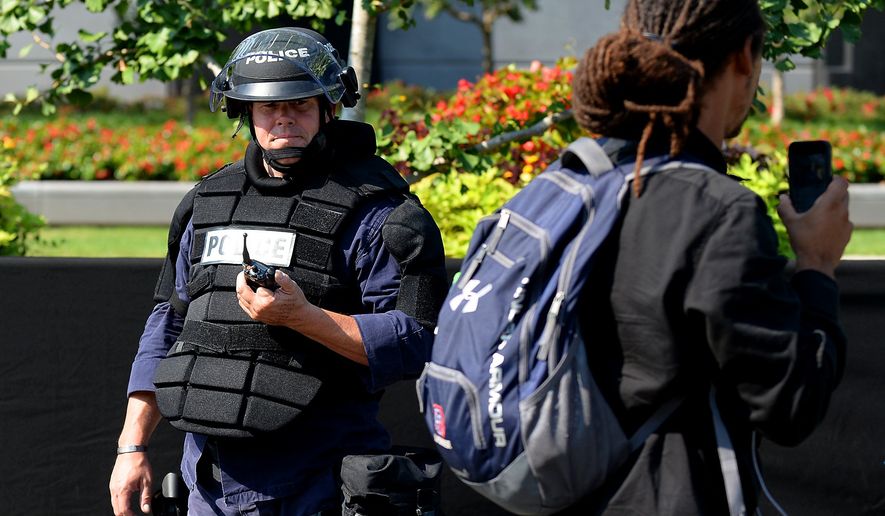Local police departments’ use of criminal background checks and citizenship requirements to vet job applicants are among the barriers limiting diversity in law enforcement, a new Justice Department report finds.
The report, released Wednesday in conjunction with the Equal Employment Opportunity Commission, critiques several widely used police-hiring practices — noting that over-reliance on such criteria “may limit certain underrepresented communities’ representation in law enforcement agencies.”
“Ensuring that law enforcement agencies represent the diversity of the communities they serve can help restore trust and improve policing,” said Deputy Assistant Attorney General Vanita Gupta.
Criminal background checks done as part of police departments’ hiring processes are “likely to disproportionately impact racial minority applicants,” the report states.
The report acknowledges that police departments are “undeniably justified in carefully vetting and investigating potential hires” through background checks, but it suggests that agencies should not automatically disqualify applicants who have used drugs or have a criminal record.
“Excluding applicants regardless of the nature of the underlying offense, or how much time has passed since an offense occurred, or without any consideration of whether the candidate has changed in the intervening period, can be a significant — and unwarranted — barrier,” the report states.
Requiring that officers be U.S. citizens, a must in many police agencies, also can be problematic, the report indicates. Such requirements “may prevent a considerable number of racial and ethnic minorities — many of whom have valuable foreign language skills — from being hired by law enforcement agencies.”
Other hiring policies, such as written or physical agility tests, and the awarding of preference points for veterans, also were identified as practices that could create barriers for racial minorities and women.
The report does not suggest that law enforcement agencies struggling to increase diversity do away with these polices and practices, but it does suggest that agencies recognize the barriers such policies create and develop strategies to compensate for their impact.
According to a 2013 Bureau of Justice Statistics study, racial or ethnic minorities make up 27 percent of the overall number of full-time sworn law enforcement officers, with blacks and Hispanics each composing about 12 percent.
The 2010 U.S. Census puts the black population at roughly 12 percent and the Hispanic population at 16 percent. Women, who account for half of the U.S. population, make up just 12 percent of officers.
The lack of diversity within police departments emerged as an issue of concern for the Justice Department in its evaluation of the Ferguson Police Department, undertaken after the shooting of a black man by a white officer triggered unrest in the Missouri town.
Later, the Obama administration’s Task Force on 20th Century Policing recommended increased racial, gender and cultural diversity as a way to improve the relationships between police departments and the communities they serve.
Wednesday’s report reviewing the successes of several law enforcement agencies sought ways to attract and retain a diverse workforce and seeks to provide other agencies with strategies to help increase diversity, officials said.
• Andrea Noble can be reached at anoble@washingtontimes.com.




Please read our comment policy before commenting.